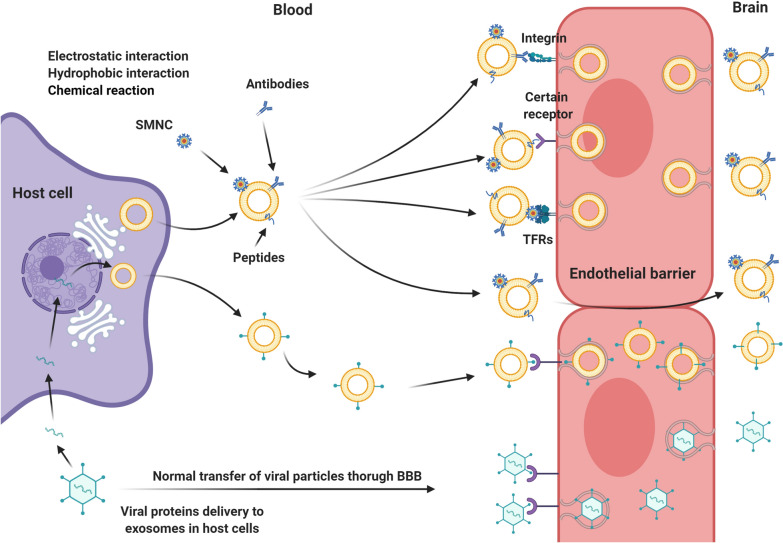Fig. 10.
Exosome surface modification strategies. Different surface modification strategies are used to improve exosome delivery to the brain parenchyma. By using click chemistry, RGDyK-conjugated exosomes have been enabled to cross BBB with high intensity through specific binding to αvβ3 integrins on the surface of brain vascular endothelial cells. The capability of RGE surface-modified exosomes is more than nude exosomes to reach the abluminal side of the brain by binding to NRP1 and VEGFR-2 receptors on the luminal surface, which decreases the BBB integrity and increases the transcytosis rate of modified exosomes. Surface engineered exosomes with ApoA-I mimetic peptides (KLA) attach to the low-density lipoprotein membrane-bound receptors (LDLRs) and passage BBB by increased high rate endocytosis or transcytosis pathway. Released exosomes by viral protein transfected cells also show a high capability of BBB crossing. Rabies viral glycoprotein (RVG29)-conjugated exosomes, with specific binding to acetylcholine receptor on the luminal side of brain endothelial cells, cross BBB by highly improved transcytosis pathway. Surface modified exosomes by using CCR5 and Nef (HIV surface proteins) transfected cells acquire a high ability to cross BBB by recruiting transcellular and paracellular routes, respectively. Nef-exosomes decrease the expression of TJs proteins and trans-endothelial electrical resistance (TEER) of BBB

